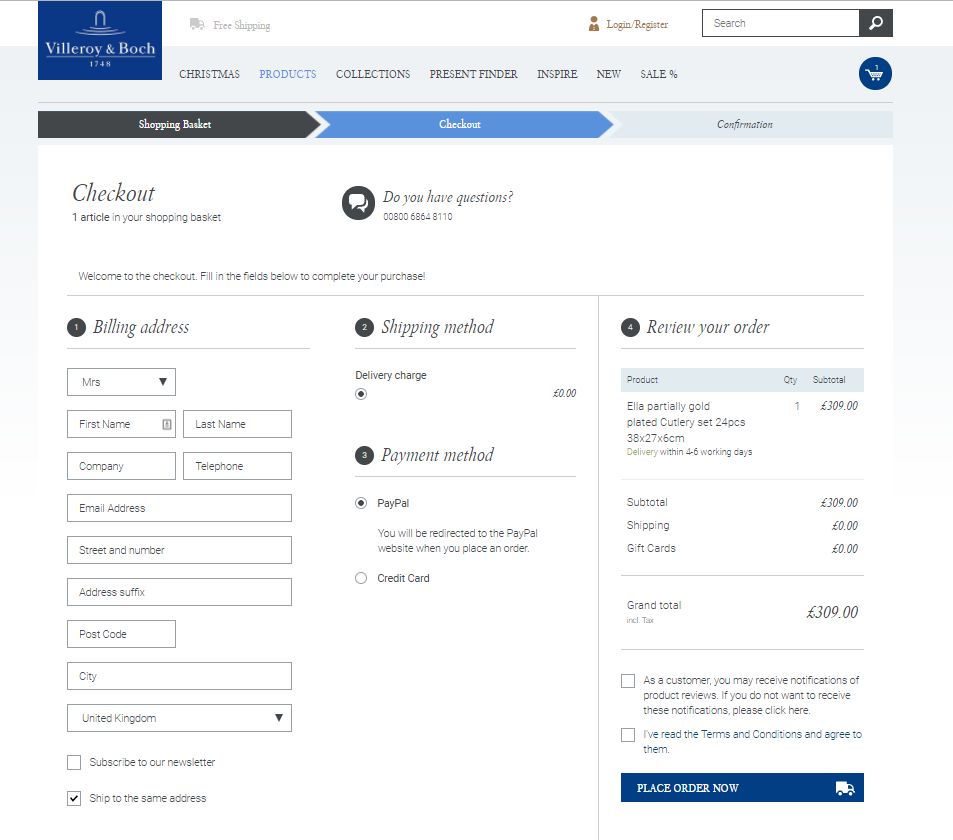For years, even decades, online retailers have invested massively in SEO, Adwords and online advertising to drive traffic to their stores. However, did you know that out of 100 visitors, only 3 end-up placing an order? Imagine you convert one more of these 10 visits into an actual sales. Mathematically that’s now for orders, a 30% increase on your sales transaction.
How do we know only 70% of visitors order? What is causing this? What can we do about it? Read on to understand what happens along the purchase funnel.
How do you calculate your eCommerce Conversion Rate?
Conversion Rate = [number of visitors who successfully placed an order] divided by [number of visitors]
Here is the Conversion rate benchmark by Monetate eCommerce quarterly report Q3 2016
Key highlights:
- The downward trend of conversion rate globally, in the US and the UK
- The significantly lower conversion rate from visits on a smartphone vs traditional (i.e. desktop/laptop)

Online Sales Conversion can be broken down in two distinctive parts:
- Visit to cart = how do you inspire a visitor to add an item in their shopping cart or basket
- Cart to order = how do you make sure that the visitors places an order and doesn’t abandon his/her shopping cart
How do I get visitors to add an item to cart?
So out of all the people who visit my online store, how do I get more of them to pick an item and add it to cart?
First of all, we need to point out a key trend: Mobile commerce passed desktop for the first time in Q3 2016 and as shown in the chart above, Conversion on Mobile device is very low, so it brings the whole Conversion Rate stat down.
Why is Conversion low on Mobile? On Mobile, shoppers are browsing, clicking on ads, comparing products, doing their research. Their mindset is definitely not set on purchasing right there.
Interesting stat: 82% of all shoppers check their phones while in store before making a purchase, according to Bazaarvoice. That might a be a lot coming to your online store to eventually purchase in the offline store .
Now imagine a visitor lands on your homepage. What are the key things that can help him/her pick and item and add it to cart:
- Inspiration: you need to show things they like, it could be certain styles, brands, offers etc…
- Relevance: soften they know what they are looking for so a great site search bar showing the most popular items with pictures and key attributes can help greatly. Read more about what a good site search can do for you.
- Site Speed: it’s a fact: “An increase in site speed from 8 to 2 seconds can boost your conversion rate by 74% (this is based on data monitoring real user activity from 33 major retailers)” so talk to your hosting company and make sure your code is as light as possible
- Trust: online safety is still a concern especially among older demographics or when making a high value purchase. Read how jewelry and watch online store build trust.

Trust is conveyed through: direct delivery from the Manufacturer, Secure payment and reviews at the bottom of the page. Free Shipping also helps drive conversion.
How do I convert items in carts into successful orders?
The same question can also be flipped around as “how to I reduce cart abandonment on my online store?
Cart abandonment is a huge issue with global rates over 70% according to many studies and indexes.
Last year we analysed drivers for cart abandonment and best practices from checkout conversion top performers and here are top four take aways:
- Be my Guest: Forcing to create an account is the second biggest barrier. So follow checkout conversion top performers who all allow for Guest Checkout.
- Can’t get enough Speed. Speed is not just how fast your pages load. Having all checkout steps on one page helps. Having a well coded extension that is light and optimized helps too. That’s also what top performers optimize for.
- UX Design: Research from the Baymard Institute suggests the average e-commerce site can improve its conversion rate by 35% solely through design improvements to the checkout process.
- We all hate filling forms: 1 in 4 shoppers abandon their cart because the form was too long or complex to fill. So simplifying the form, removing all unnecessary fields and help shoppers fill it quicker and more accurately with address verification tools is a good idea.
In the example above, Villeroy Boch used OneStepCheckout to meet their checkout conversion needs.
How about you?
What strategies are you putting in place to improve your online sales conversion. Do you focus more on the top of the funnel (add to cart) or the bottom of the funnel (checkout conversion)?

